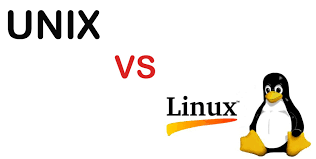Difference Between Unix and Linux
Unix vs Linux
Unix and Linux both have been of great use in changing the world of operating systems. Unix was among the very few operating systems which were programmed for computers. Today the popularity of Linux shows the power of open-source communities. These communities have worked for years to provide the Linux we use today.

Linux was inspired by Unix and the kernel was programmed by a college student name Linux Torvalds. He wanted the operating system under his creation, but he made the project open-source due to some circumstances.
Here we are going to learn about both the operating systems; What are the similarities? Which is better? And many more.
Unix vs. Linux Commands
Mostly all the commands and command-line tools of Unix can be used on Linux and vice versa. Some of the most common commands used in both these operating systems are listed below.
- pwd: this is used to show the current working directory.
- cd: this is used to change the directory.
- ls: this is to list all the files and folders in the current directory.
- mkdir: this is to make a directory.
- rmdir: this is to remove an existing directory.
- rm: this is used to remove or delete files and folders.
- chmod: this is to provide specific permissions to the files, for example, making them executable.
- date: to show the date in various formats.
- mv: to move any file and folder form from one directory to other, also used for renaming.
Difference Between Unix and Linux
| Features | Unix | Linux |
| Release Year | The Unix was released in 1969, way before the Linux. | Linux was officially released in 1991. |
| Developer | A group of programmers developed Unix. The most known developers are Ken Thomson, Dennis Ritchie, and Brian Kernighan. | A Finnish student named Linux Torvalds developed the Linux kernel as his college project. |
| License | Unix is a copyright operating system. | On the other hand, Linux is an entirely free operating system. This OS is released under GNU GPL. |
| Portability | Unix was not portable, and it was specific to the environment. | Linux provides portability of the operating system among several environments. |
| Code Language | C Programming Language. | Also written in C programming language. |
| Cost | Unix is a paid operating system. | Linux is free of cost. You could use it and tweak it. |
| File system support | Unix supports zfs, xfs, ufs, gpfs, hfs, hfs+, jfs formats. | Linux supports ext2, ext3, ext4, jfs, Xfs, Btrfs, FAT, ReiserFS, NTFS, etc. |
| Flavors Available | Some of the variants available are: AISHP-UXBSDMac OS | Linux has over 600 variants, and some popular ones are listed below: UbuntuKali LinuxRedhatCentOSFedoraSUSE |
| Target Use case | Unix was primarily designed to be used on servers and workstations. | This OS can be installed by regular users as well. |
| Security | Unix is a very secure OS. It has only about 85 to 120 viruses identified. | After the release of Linux until today, only 60 to 100 viruses work on Linux. |
| Threat Detection | Being a commercial product, it has a long-term support version that could late bug fixing. | Linux is a community-driven product so, bug fixing is faster in comparison to Unix. |
| Initial Interface | The Unix systems mainly provide a command-line interface to the operator or user. | The Linux systems mainly provide graphical interfaces with support to the command-line interface. |
| System Type | Unix, when released it was a complete operating system. | Linux was just a kernel when it was first released. |
| Source code | Unix did not publish the source code. This OS was not open-source. | Linux allowed the user to use the source code in their own way. |
| Architecture | Mostly it is available for PA-RISC and Itanium Machines. | Initially developed for Intel x86 architecture. |
| Processors | Unix supports x86/x64, Power, Itanium, PA-RISC, PowerPC, and many others. | Linux is used with almost all kinds of processors. |
| Graphic Interfaces | Mostly all the Unix Operating systems are shipped under Gnome. | Linux has mainly two types of GUI’s; one is KDE, and the other is Gnome. It also has other supports like LXDE, Xfce, Unity, Mate, twm, etc. |
As we know every product has to improve and it can be made effective than the last version. Here we are going to discuss the limitations of both Unix and Linux operating systems.
Unix Limitations
Some of the drawbacks of Unix OS are listed below.
- Unfriendly UI: The Unix users have complained about its user interface for not being user-friendly.
- Lacks consistency: The machines are different than general use cases.
- Doesn’t support a Real-Time Response system
- Slow down system performance: The Unix was designed for slow computers, which makes them less effective.
Linux Limitations
Some of the drawbacks of Linux OS are listed below.
- Standard Support: Linux does not have any standard support. Some of the paid version does have this facility.
- Patchy support for drivers: This patchy driver support leads to the malfunctioning of the entire system.
- Emulator: Many of the programs which are used when Linux requires complex emulators.
- Linux for new users is not very easy to learn. And for those who are using windows, it is much of a complex process.
Market Trends
Here we have compared some market trends of Unix and Linus operating systems over the years.
Websites: More than 69% of the major websites are using the Unix Operating system. Whereas Linux is about 38% of the significant website uses.
Linux Market: Linux market has been rapidly increasing since 2018, even though Unix is much more historically known.